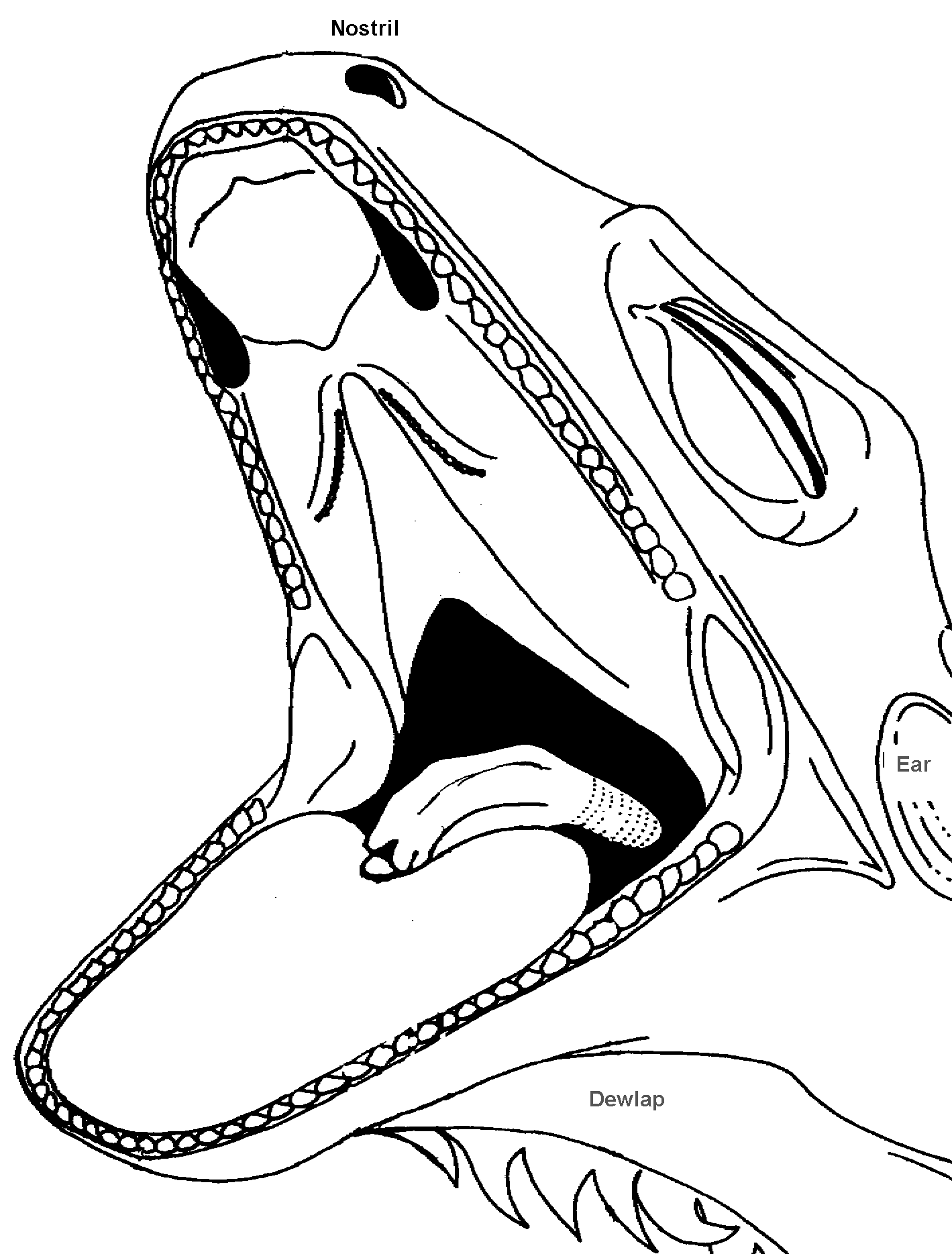
Melissa
Kaplan's
Herp Care Collection
Last updated
January 1, 2014
Green Iguana Mouth
©1999 Melissa Kaplan
This drawing of the iguana mouth is an image map. Click on the main structures inside the mouth to find out what they are. You may need to look at your browser's lower operator bar to see when you are on a mapped area.

Drawing excerpted from Laboratory Anatomy of the Iguana. 1975. Jonathan C. Oldham and Hobart M. Smith. Illustrated by R.S. Hicks, S.A. Miller, and R.D. Weaver. Wm. C. Brown Company Publishers, Dubuque IA. p. 57
Parts of the Mouth
Palate
The palate forms
the front part of of the roof of the mouth.
Fenestra
exochoanalis
Part of the chemosensory
structure leading to the vomeronasal organ (also called the Jacobson's
organ).
Choana
The choana, located
in the palate, connects the nasal cavities with the larynx.
Glottis,
Epiglottis and Larynx
The glottis opens
and closes as the lizard or snake breathes. If it is open when you are
forcefeeding or force-hydrating, the fluids or food may run down or be
forced into the open glottis if the reptile is not given time to close
it between breaths.
Trachea
The trachea is the
conduit through which air passes between the lungs, mouth and nasal cavities.
Tongue
The tongue's forked
tip (not seen in this drawing) contains chemosensory receptors which,
when the tongue tip is brushed against the fenestra exochoanalis, passes
them onto the vomeronasal organ. The tips of the iguana's tongue are a
deeper, darker red than the rest of the tongue, though this coloring may
not become apparent until the iguana is two or more years old and the
tongue considerably larger than it is in hatchlings.
Related Articles